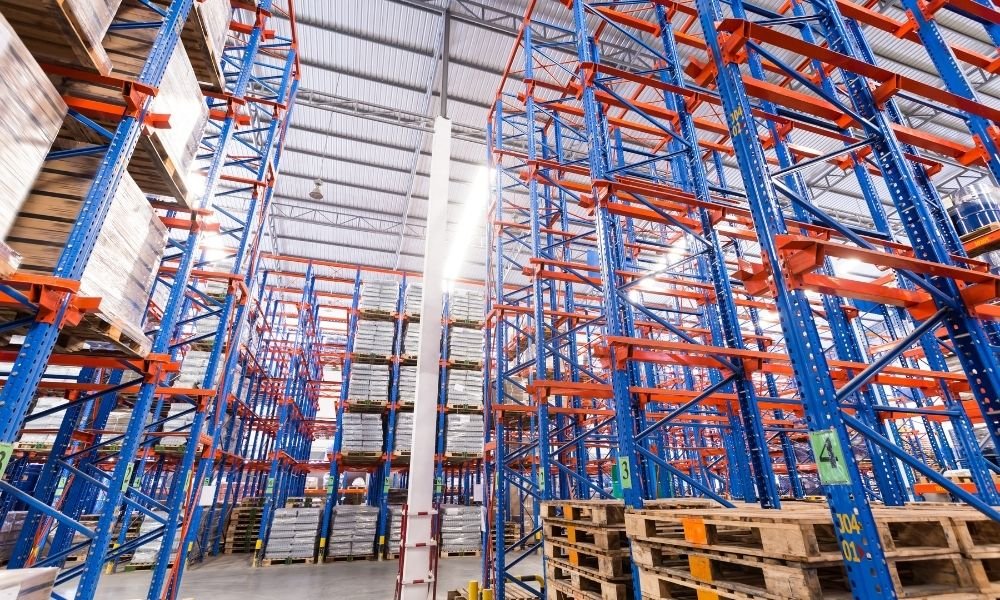Every time you receive a package at your doorstep, it has likely spent weeks navigating the labyrinthine corridors of a racking system that most consumers never see, yet which quietly orchestrates the flow of global commerce with mechanical precision. These towering steel structures, reaching up to fifteen metres high and stretching across warehouse floors the size of football pitches, represent one of the most critical yet invisible infrastructures of modern life, a network that determines not only what products reach which destinations, but also the working conditions, economic opportunities, and daily realities of millions of warehouse employees across Britain and beyond.
The Anatomy of Organised Commerce
To understand how these systems shape contemporary life, one must first grasp their fundamental architecture. A typical racking installation resembles a three-dimensional grid where every coordinate has been calculated for maximum efficiency. The uprights, vertical steel columns anchored deep into reinforced concrete, support horizontal beams that create storage bays measured in precise increments. Each component serves multiple functions: structural support, inventory organisation, and pathway definition for both human workers and mechanical equipment.
The sophistication becomes apparent when observing the system in operation. During peak periods, such as the pre-Christmas rush, a single warehouse might handle 50,000 individual items daily, each requiring temporary storage before onward distribution. The racking system provides the spatial framework that makes this volume possible, transforming what would otherwise be a chaotic accumulation into an organised flow.
Human Stories Within Steel Frameworks
Behind the engineering specifications lie human narratives that reveal the systems’ broader impact. Consider Janet, a warehouse operative in Coventry, who begins each shift by scanning a handheld device that directs her through a predetermined route among the racking aisles. Her daily path, optimised by algorithms analysing picking efficiency, might cover twelve kilometres of walking whilst retrieving items from storage locations that can reach heights requiring scissor lifts or cherry pickers.
The vertical dimension fundamentally alters the nature of warehouse work. Traditional storage, spread horizontally across ground level, allowed workers to survey entire inventory areas at a glance. Contemporary racking systems create canyon-like aisles where visibility extends only to the next intersection, transforming warehouse navigation into a skill requiring both spatial awareness and technological assistance.
The Economics of Vertical Space
The financial calculations driving racking system design reveal broader patterns in how contemporary business operates. In areas where property values command premium prices, particularly around major transport hubs, the economic pressure to maximise storage density per square metre becomes intense. A well-designed racking installation can triple or quadruple storage capacity compared to traditional floor-level arrangements, justifying substantial capital investment through ongoing operational savings.
This vertical intensification carries consequences beyond immediate cost calculations:
- Employment concentration: Fewer, larger facilities require workers to travel greater distances for employment
- Skill transformation: Traditional warehouse knowledge becomes obsolete, replaced by technical competencies
- Regional development: Large installations influence local infrastructure, housing, and service provision
- Supply chain resilience: Centralised storage creates both efficiency gains and vulnerability concentrations
Safety and Risk in Three Dimensions
The upward expansion of storage creates safety challenges that extend far beyond traditional warehouse hazards. When goods are stored at heights exceeding four metres, the consequences of structural failure or operator error escalate dramatically. A single misplaced forklift impact can trigger progressive collapse, affecting entire racking sections, whilst items falling from upper levels pose risks that ground-level storage never presented.
These realities have driven the development of comprehensive safety protocols that govern everything from seismic anchoring requirements to daily inspection routines. The result is a working environment where safety consciousness must permeate every operational decision, from loading procedures to maintenance scheduling.
Global Perspectives and Local Adaptations
The adoption of advanced racking technologies varies significantly across different industrial environments, influenced by regulatory frameworks, labour market conditions, and infrastructure capabilities. As one logistics specialist recently noted, “Singapore’s racking system implementations have demonstrated how standardised engineering principles can accommodate diverse operational requirements whilst maintaining consistent safety standards.”
This observation highlights a crucial aspect of how global technologies integrate with local conditions. Whilst the basic engineering principles remain consistent worldwide, successful implementations require careful attention to specific regulatory requirements, climate conditions, and workforce characteristics.
Technology Integration and Future Directions
Contemporary racking systems increasingly incorporate automated elements that blur traditional boundaries between storage and retrieval functions. Robotic systems navigate the same aisles as human workers, following predetermined paths to fulfil orders with mechanical consistency. This technological integration creates hybrid working environments where human adaptability complements mechanical precision.
The transition toward automation proceeds unevenly, influenced by factors including labour costs, technological reliability, and customer service requirements. Many operations maintain mixed systems where automated processes handle routine tasks whilst human workers manage exceptions and customer-specific requirements.
Environmental and Social Considerations
Modern racking installations increasingly reflect environmental consciousness that extends beyond immediate operational concerns. Energy-efficient lighting systems, sustainable materials selection, and design approaches that minimise construction waste demonstrate how infrastructure development adapts to evolving social priorities.
Conclusion
The racking systems that define contemporary warehousing represent more than engineering solutions; they embody particular approaches to organising work, space, and economic activity that influence communities far beyond warehouse walls. Their continued evolution reflects ongoing negotiations between efficiency imperatives, safety requirements, technological possibilities, and human capabilities. Understanding these systems provides insight into how seemingly mundane infrastructure shapes the conditions of modern life, from employment patterns to consumer expectations. As global commerce continues adapting to changing demands and technological capabilities, the racking system remains both a practical necessity and a window into the complex relationships between technology, labour, and economic organisation that define contemporary industrial society.







